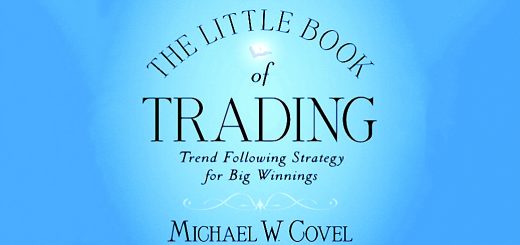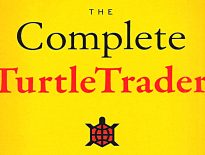The Turtle Traders #7

Today’s post is our seventh look at the Turtle Traders, and our fifth and final visit to Michael Covel’s book on the subject.
Contents
Failure Is a Choice
The next chapter of Covel’s book starts by looking at why some Turtles were more successful than others.
- This sounds like it could be interesting, but variation in subsequent performance is to be expected, and it’s so difficult to work out the underlying causes.
Certainly raw intelligence wasn’t the deciding factor:
Good traders apply every ounce of intelligence they have into the creation of their systems, but then they’re dumbbells in following them.
You’ve got to have a schizoid approach. Work like hell to make it good, and then ignore it like you’re a brick wall.
Faith
In 2003 Curtis Faith started a website that give away the Turtle rules for “free” (actually in return for a charitable donation).
- We looked at the document he made available in an earlier post.
Remember that Faith had previously criticised Sands for selling the rules.
- But by 2006, his own website was charging $30 for the rules.
Faith appears to have burned through the millions he made working for Dennis, partly through a divorce but also notably through investing in a software company that went bust.
He was selling a system / hedge fund called “Acceleration Capital Mercury 4X LP”, having “come out of retirement” to promote it.
The fund traded for a short period, accrued significant losses, and was shut down.
It was later investigated for embezzlement by an employee of a firm that shared the same offices.
Second-Generation Turtles
The key test [of whether Dennis’ experiment was successful] is whether the Turtles themselves were capable of passing on the investing knowledge they’d learned.
That second- generation Turtles exist is arguably the most important part of the Turtle story. They prove that (possibly) anyone can be a Turtle today.
Second-generation Turtles include Mark J. Walsh, Jonathan Craven, John D. Fornengo and Salem Abraham, who all learned Turtle-style trend following secondhand.
I find this a bit confusing – are 2nd gen Turtles taught by 1st gen Turtles, or did they just read the book?
Salem Abraham
Covel singles out Salem Abraham as the best example of a 2nd gen Turtle.
Salem Abraham would never have pursued trading if not for a chance meeting with Jerry Parker.
He bumped into Parker at a wedding, and they got to talking about trading.
- Out of politeness, Paker invited him over to see his operation, and Abraham took him up on it.
After a single meeting where Parker filled him in on trend following and risk management, Abraham read up everything he could find about Dennis.
Dennis and Eckhardt Training
Abraham actually received personal instruction from Dennis and Eckhardt several years after his Second-Generation Turtles trading firm was launched.
In the early 1990s, Commodities Corporation asked Dennis and Eckhardt to hold a third Turtle class for their stable of traders. Instead of two weeks, it was held over four days.
Dennis would basically tell the class, “The system is a nice thing to guide you, but it’s okay to set the system aside.”
Eckhardt was saying something a little different: “These are the odds; it’s all a math game.” Nothing had changed about the two teachers since the original Turtle experiment.
Abraham said:
I care about the statistics. Pretend a physicist walks in with a coin and says, This coin will always come up 50/50 heads or tails.” A statistician, however, walks in and says, Yes, but I flipped it one million times and 65% of the time it came up heads.
At some point you have to say, I don’t know why this coin is coming up 65% heads, but I’m willing to bet after a million flips that the 65% percent rate will hold true. Just because I don’t understand it doesn’t mean I’m not going to bet on it.
Two parts
For Covel:
The Turtle story breaks down into two parts. Part one takes place during the experiment, when the Turtles are on the relatively level playing field designed by Richard Dennis. His experiment proves nurture trumps nature.
Part two takes place after the experiment, when the Turtles have to face the real world as individuals and human nature reenters the picture.
Larry Hite said:
The people who are very good and long-lasting are tough. If life goes against them, they stick to their game. There is a certain amount of mental toughness to have clarity.
Toughness is just the ability to roll with the punches. They don’t get disappointed by losses. Some people when they lose, they don’t get back up.
The market doesn’t care
The bottom line is that the market doesn’t care about you personally. It doesn’t care about your gender, culture, religion, or race. It’s one of the last frontiers where low barriers to entry allow anyone to bet his cash and take a whack at making big money.
We all have the opportunity to build upon our inborn gifts. Ultimately, the path that led a regular Chicago guy [Dennis] to the top, that led him to teach a handful of beginners to win big and make millions like him and inspired a generation of Wall Street titans, is a path we can all take.
Conclusions
It’s been more anecdotal today, but a decent read.
- We didn’t learn much more about how to trade like a Turtle, but we’re through the book in five articles.
I’ll be back in a couple of weeks with a summary of those, and of the two introductory posts in this series.
Until next time.















